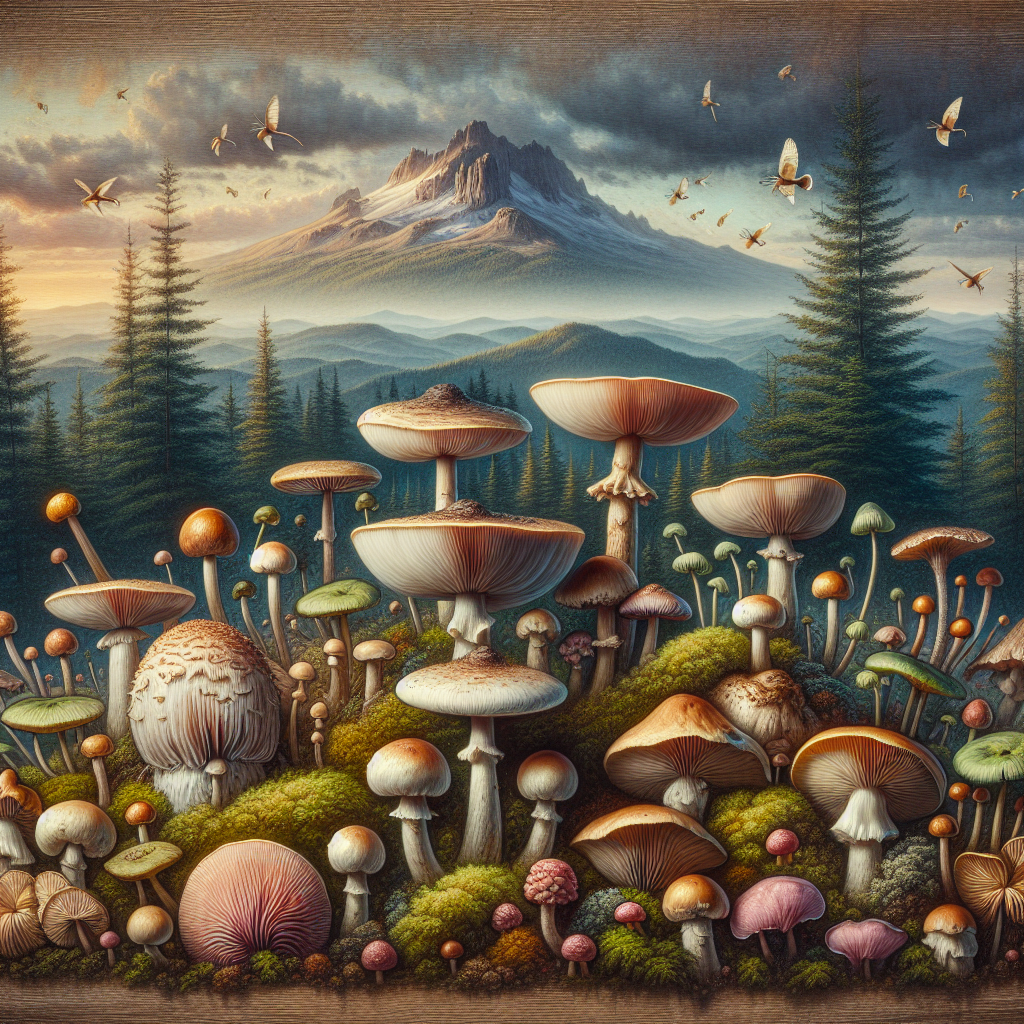Title: Mushroom Hunting in Oregon: A Novice’s Guide from a Longtime Local
Introduction
Nestled amidst the emerald forests and misty coastal areas, Oregon is a veritable haven for mycologists, seasoned mushroom hunters, and budding foragers. One can traverse through ancient, moss-laden woodlands, venture incandescent, serene trails of Mount Hood, or meander around the refreshing breeze-kissed expanse of Silver Falls State Park. And often, underfoot, nestled between old growth roots or peeking from decomposing logs, an array of fungi waits to be discovered. This guide will navigate the beginners through the fascinating world of mushroom identification in Oregon.
The Fascinating Fungi
Oregon is home to hundreds of different mushroom species, each with unique identifiers. Two iconic species are the Golden Chanterelle and King Bolete – prized varieties that have made Oregon famous in mycology circles. Golden Chanterelles, as the name suggests, sport a golden hue and a trumpet-like structure. King Boletes, on the other hand, have larger domed caps, often some shade of brown, and a definitive spongy underside.
However, caution is paramount. Numerous species have toxic counterparts, like the Death Cap or the Destroying Angel that bear a striking resemblance to edible varieties. If uncertain about a mushroom, it’s best to leave it alone, following the old local wisdom of “when in doubt, throw it out.”

Weather, Seasons, and their Indulgence
The Oregon weather plays a key role in mushroom foraging. On the coast, the sharp turn that weather takes in the afternoon can suddenly make picking difficult. It’s best to head out early, in the cooler morning when the fog still lingers.
The wet, temperate fall serves as a fertile breeding ground for numerous mushroom species. However, late spring to early summer also provide a bountiful harvest for the patient forager, particularly in higher-altitude areas like Sisters or around Crater Lake.
Etiquette of Foraging in Oregon
Oregonians live in harmony with nature. Thus, they respect rules of foraging for the sustainability of the ecosystem. In most national or state parks, like the Siuslaw National Forest, it’s legal to collect up to a gallon of mushrooms per day for personal use.
However, note that private property and certain areas like Rimrock Springs Wildlife Sanctuary have strict foraging prohibitions. Always research ahead and respect the established rules.
Preparing for a Mushroom Hunt
A pair of sturdy, waterproof boots, a bag or basket for collecting, a small knife for cutting, and a field guide for identification are the basics for any mushroom hunting relish. A smartphone can be quite handy for taking pictures for identification purposes. Locals also love to frequent the bookstore at Powell’s City of Books to find comprehensive guides and related texts.
A vital part of local wisdom also includes never eating any mushroom raw. No matter if it’s a delicious Morel from Bend’s outskirts or a flavorful Matsutake from the Mount Pisgah region – a quick sauté or grilling can truly bring out their flavors.
Always take precautions as inserting an unidentified mushroom into the pot could turn a delightful meal into a distressing one. For those who are unsure, the Oregon Mycological Society holds regular meetings and workshops where novices can learn from experienced foragers.
Conclusion
Whether it’s the tranquility of the Cascade Range, the dynamic landscapes around Columbia River Gorge, or the misty allure of the coastal estuaries, mushroom hunting in Oregon offers rewarding opportunities for discovery, satisfying endeavors of learning, and connect you with nature in a personal, tactile manner.
The journey may seem daunting at first, but with a cautious enthusiasm, more practice, local tips, and a genuine respect for Oregon’s diverse ecosystems, one can plunge into the artful pursuit of mushroom foraging. Remember, it’s not solely about the catch but rather about the adventure of the hunt, the crisp air filling the lungs, the tranquility of the forests, and the taste of Oregon’s gifts for the palate.
So grab a basket, take the trail less traveled, and let Oregon’s mushroom heritage enrapture the senses. Let every find be a memory, every trail be a novel, and every mushroom be a testament to the state’s natural wonder and abundance. Welcome to the extraordinary world of mushroom hunting in Oregon!
